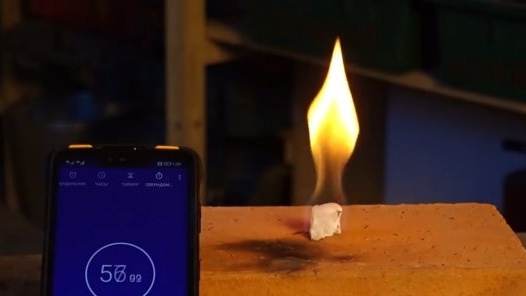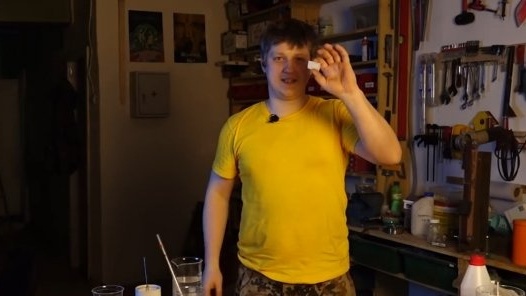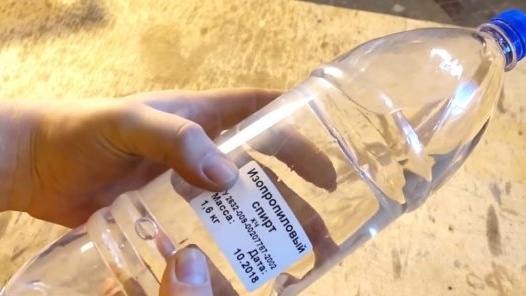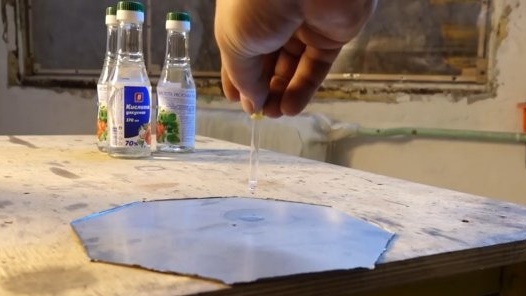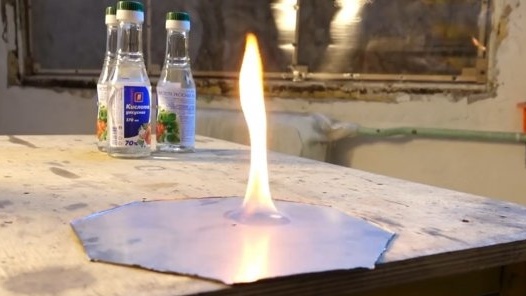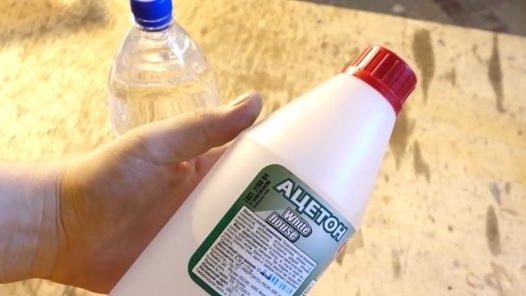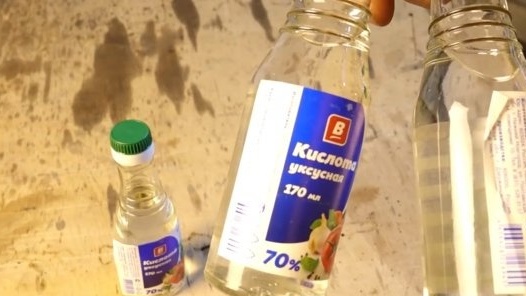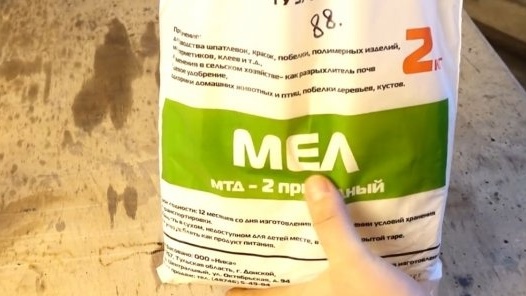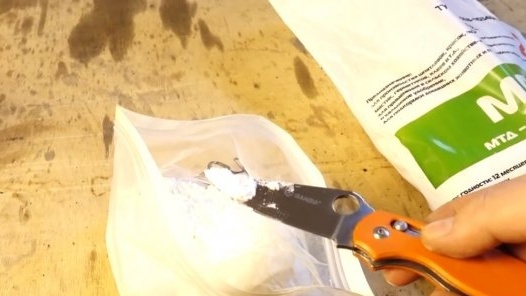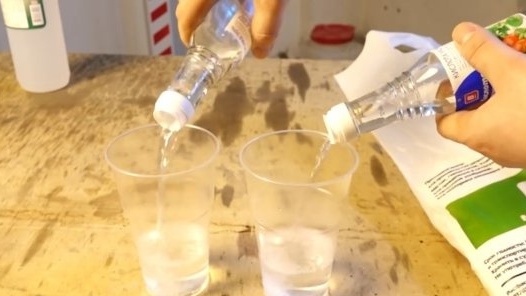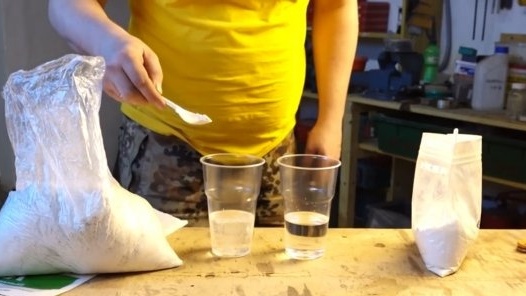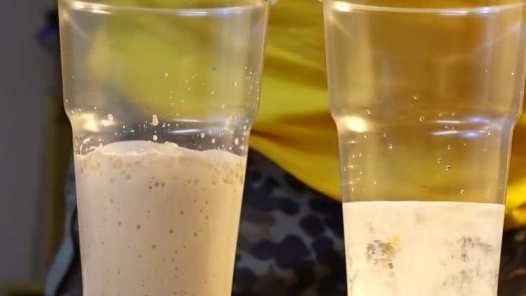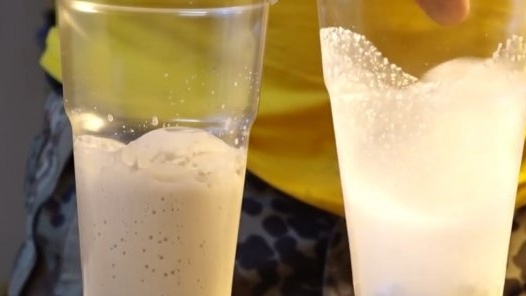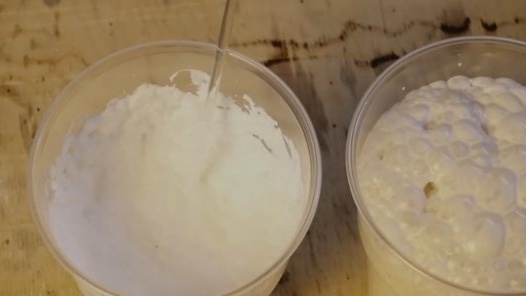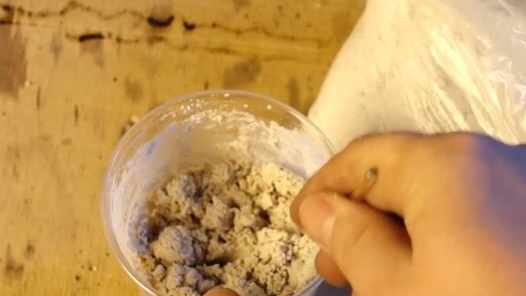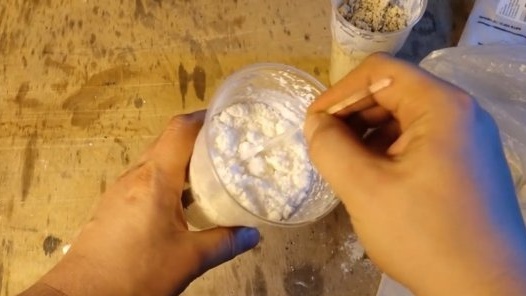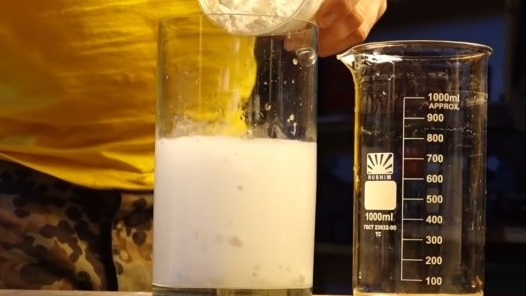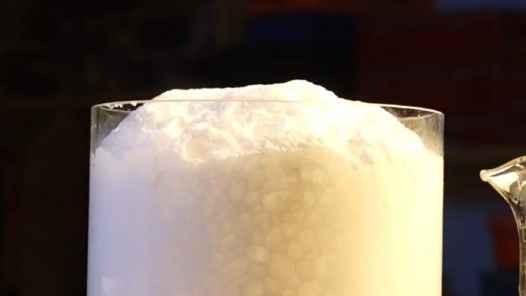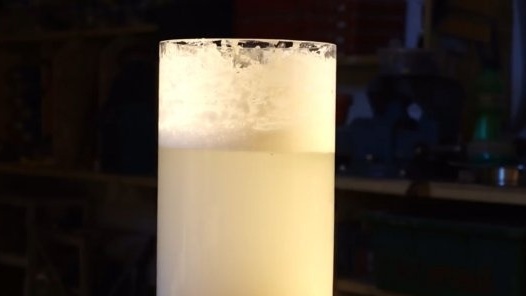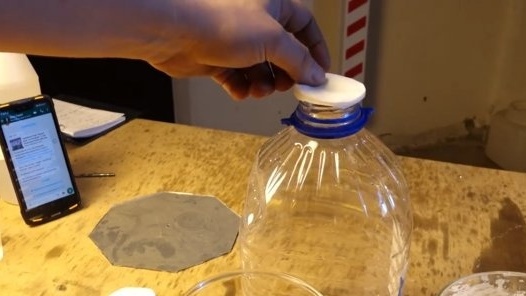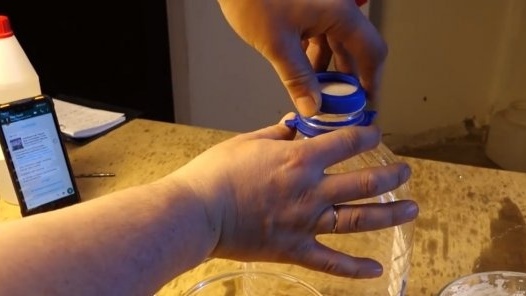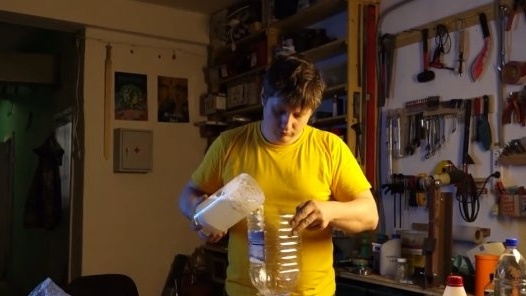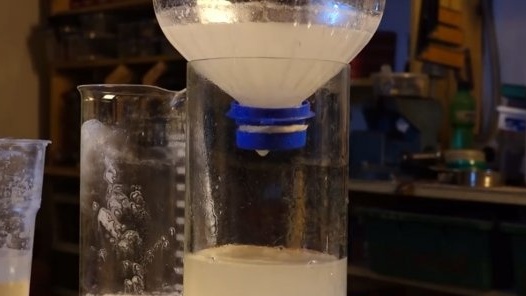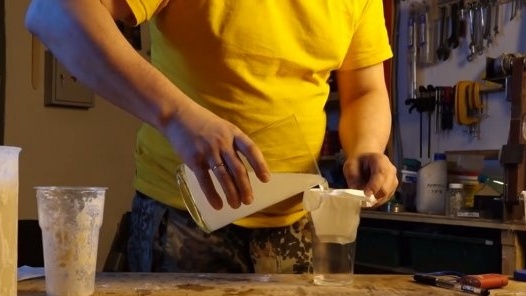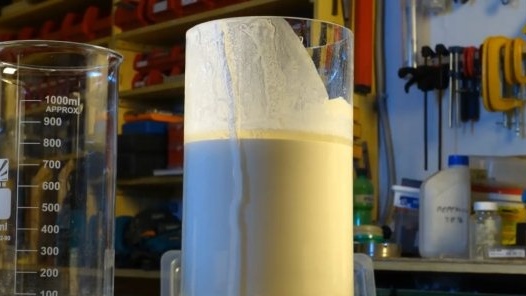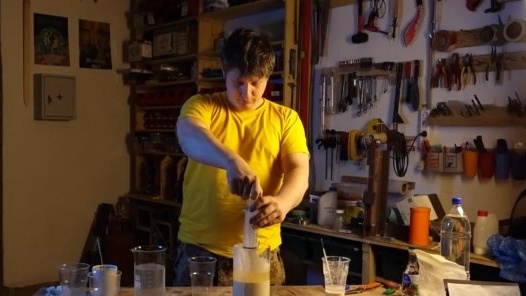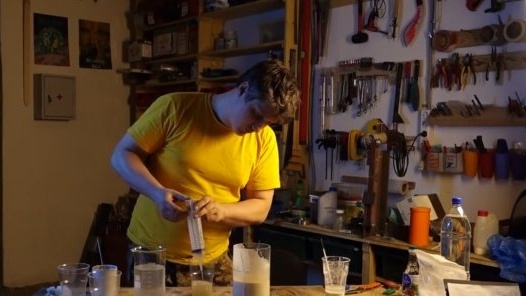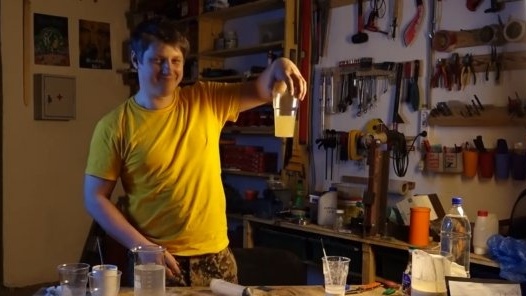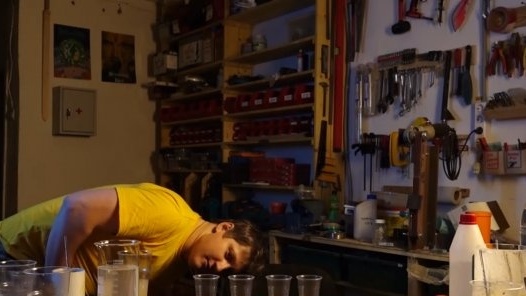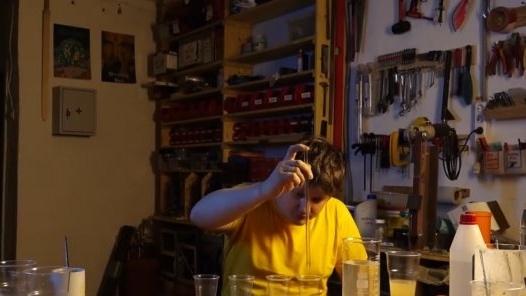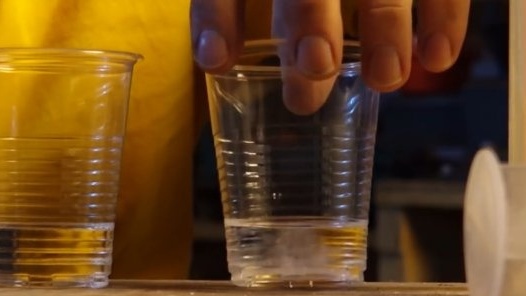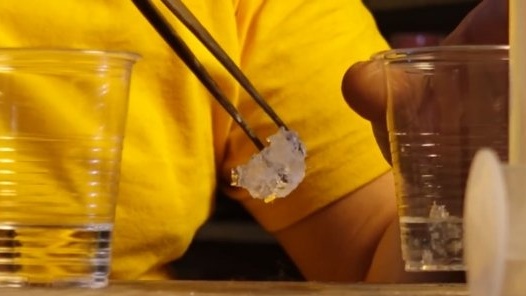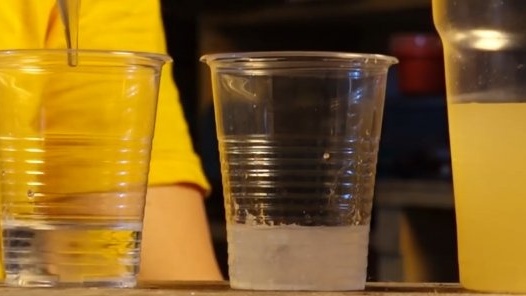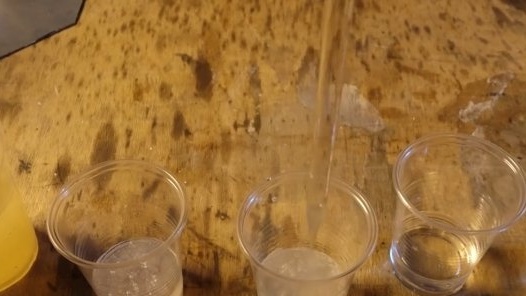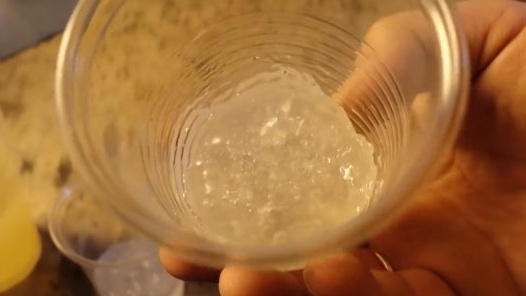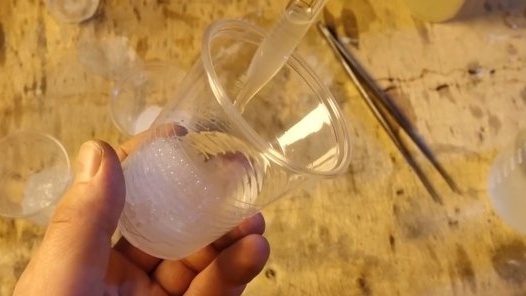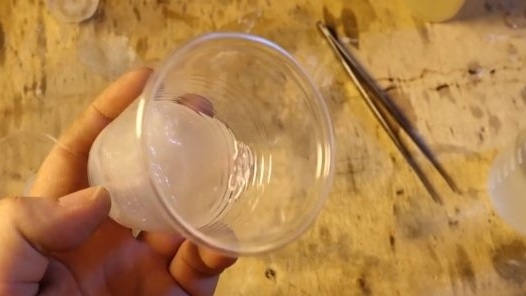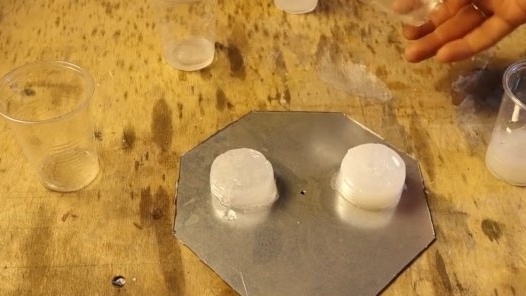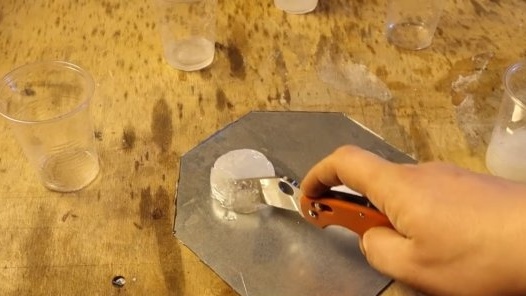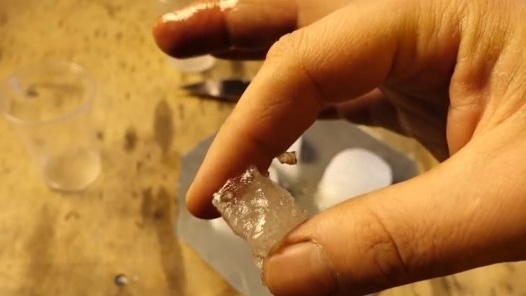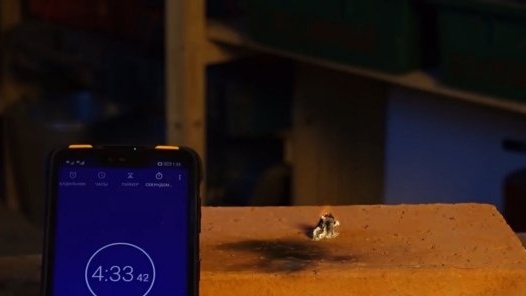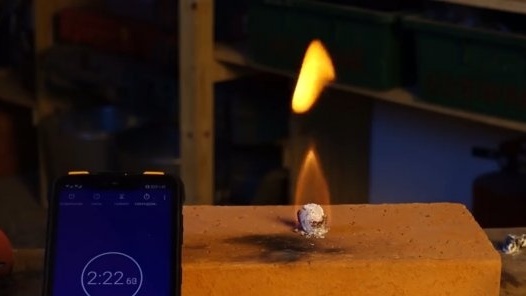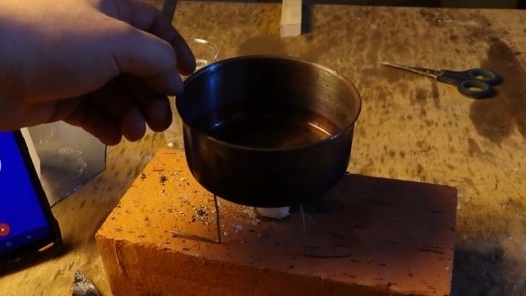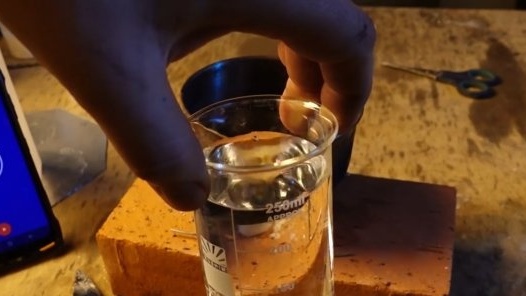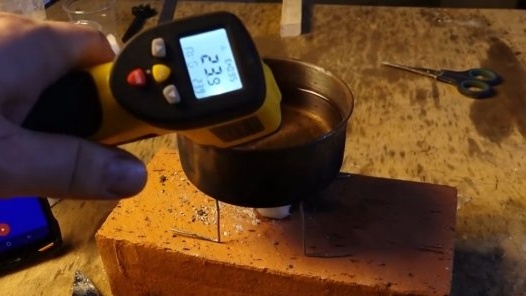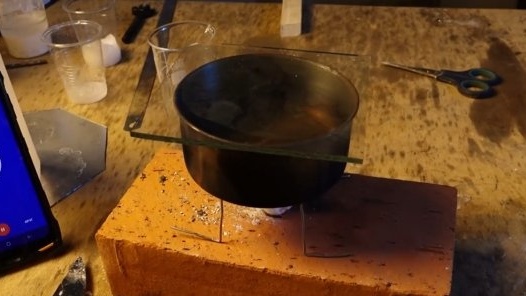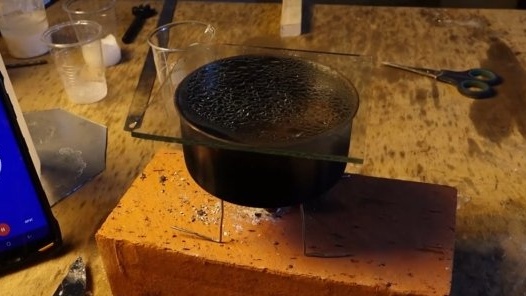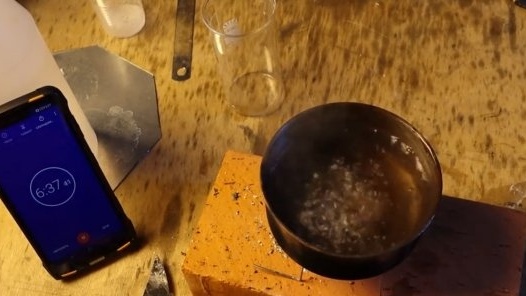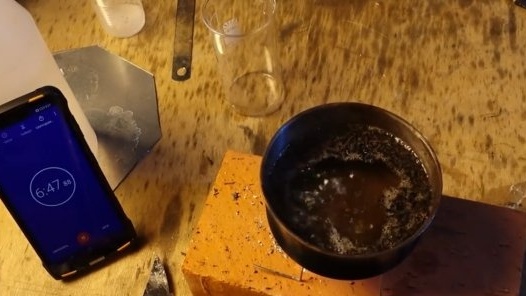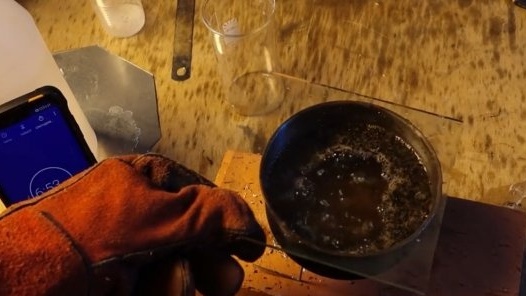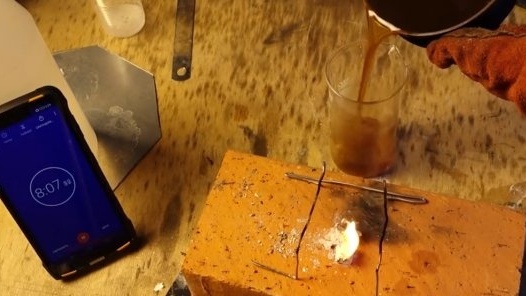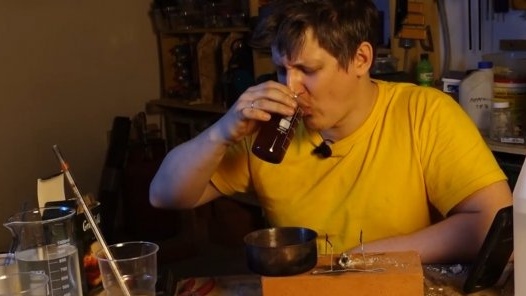Today, together with the author of the YouTube channel "Fiery TV" we will make solid alcohol. No, not dry alcohol, dry alcohol is another. Today we will make ordinary alcohol solid. Here’s how, for example, this little piece:
Yes, it was alcohol, but it is alcohol now, in principle. This tool can be used as a means for ignition, as a portable gas stove. If you take a jar of this garbage with you on a trip, you will never spill it, and it burns like ordinary alcohol. It is clear that no one wants to spend alcohol on some garbage, so the author finalized the recipe, which he found on the Internet, and also made solid acetone. There he is:
It looks exactly the same, and its properties are almost exactly the same. It’s quite difficult to find pure ethyl alcohol on sale now, but you can buy isopropyl alcohol, its properties practically do not differ from ethyl alcohol. And the specific heat of combustion of isopropyl alcohol is even slightly higher than that of ethyl alcohol, so it is better for our purposes.
Also, as mentioned earlier, we will try to make it solid and this is acetone, bought at a hardware store.
The next thing you need is acetic acid. As you know, you can get it at any grocery store.
And also chalk is required, but rather not chalk itself, but calcium carbonate, it is very much in the composition of chalk, but besides it there is also magnesium carbonate, and even all kinds of nonsense.
By the way, there is a lot of calcium carbonate in the eggshell. To make sure everything works out, we will also use pure calcium carbonate from the chemical store. Look how white, clean. Wow, top quality.
Take 2 cups and pour acetic acid into them.
Now you need to very carefully add chalk or calcium carbonate to the acid. If you pour a lot at once, then a very high foam rises.
See how much the color differs in two different glasses, natural chalk is much dirtier, but let's hope that we can still conduct this experiment with it.
During the reaction, we get a burnt-wood salt. How do you like that name?))) This is an old name, and now this substance is called calcium acetate. In water, it does not dissolve too well. At room temperature, not more than 35 g is dissolved in 100 ml of water.
That all vinegar from one bottle would react, it is necessary to add 110 g of chalk to it. But this cannot be done since the mixture just begins to solidify and the reaction stops.Therefore, it is necessary to dilute all this with water. If you add 400 ml of water, then this will be enough to dissolve all calcium acetate and get a saturated solution.
But the author incorrectly calculated and took, instead of 400 ml of water, 800 ml, so he will not have a saturated solution. Chalk should be added until it begins to precipitate. If it falls out, then all the vinegar has reacted and you can drain the water.
A solution based on pure calcium carbonate is separated into layers and settles quickly enough, and to get a more or less pure solution, just wait and drain the liquid we need.
You can be confused with filtering through a cotton wool or coffee filter, but it's all garbage. It’s easier to just wait until all the turbidity settles, the effect will be much better.
But on the basis of natural chalk, the suspension is very poorly divided into layers and it takes a long time to wait until all the dregs settle. The author waited 2 hours and without waiting for complete deposition, he simply collected with a syringe part of a transparent, well, as a transparent, relatively transparent solution.
Now pour a small amount of alcohol in 2 cups and a small amount of acetone in 2 other glasses.
Heh! Equally! Now, we will drop by drop adding a solution of calcium acetate to alcohol. As soon as a drop enters the alcohol, it immediately thickens and sinks to the bottom in the form of some kind of translucent jelly. You can even take it with your hands or tweezers.
Even despite the fact that the concentration of calcium acetate was far from the limit, still everything worked out. Now I will try to add a solution obtained from natural chalk.
Everything works! Alcohol goes from liquid to solid. Well, how solid ... solid as much as possible for a thing that is almost 100 percent liquid.
If you add more than necessary solution, then it can be drained. Acetone also begins to thicken instantly when calcium acetate is ingested. Clots form around the droplet that has fallen into acetone, and between them there remains a liquid that has not reacted. If you tilt the glass and add more acetate, then all acetone can be solidified.
Now let's try to get what we have and cut into pieces.
The resulting samples are easy to cut and hold their shape well, even despite the large amount of excess water.
As a result, acetone turned out to be a little softer and fresher than alcohol. The author also noted that over time this substance becomes more cloudy and more dense.
Now let's check how long this small piece of this remedy will burn.
The cube based on isopropyl alcohol burned for 4 and a half minutes. Now let's check about the same acetone cube.
It burns even a little longer than a cube of isopropyl alcohol. A very convenient product that you can take with you on a camping trip in the form of a finished substance, or knead it right on the spot in any suitable container. And note that it does not spread, does not turn into a puddle, even if it is knocked over, it will not spill and will not arrange a fire in the tent.
Well, since there was a conversation behind the tent, let's boil a glass of water on this miracle cube. To do this, take a piece about 1.5 by 1.5 by 1.5 cm in size, a piece of crooked wire, a can the size of a can.
Pour exactly 250 ml of water, measure the temperature at the beginning of the experiment and cover with a lid of ordinary window glass.
At first, the flame fell a little on the glass, and the author pushed the cube a little further. After five and a half minutes, the water begins to boil, but a piece of alcohol almost burned out and had to add a little more of this tool.
As soon as a new piece of alcohol was introduced, immediately the water began to boil.
Well, to disappear boiling water, you need to make a tea.
No, you still need to remove this thing from the fire, otherwise it will turn out not tea, but tea soup.
Well, this, perhaps, is over. Thank you for attention. See you soon!
Author's video:

